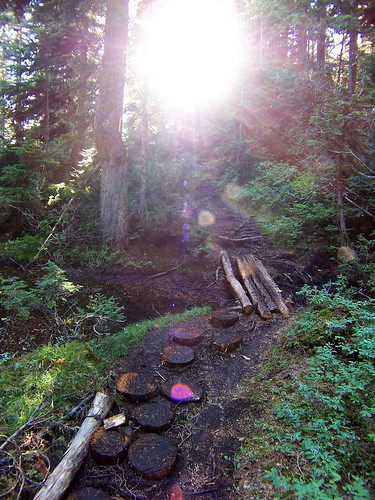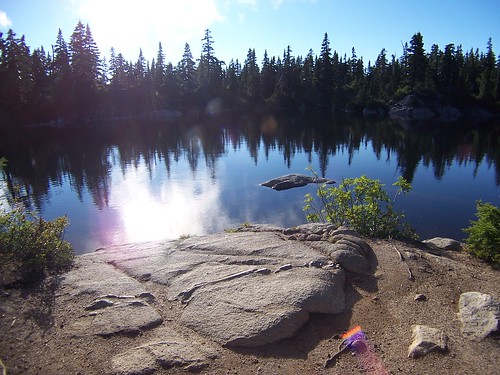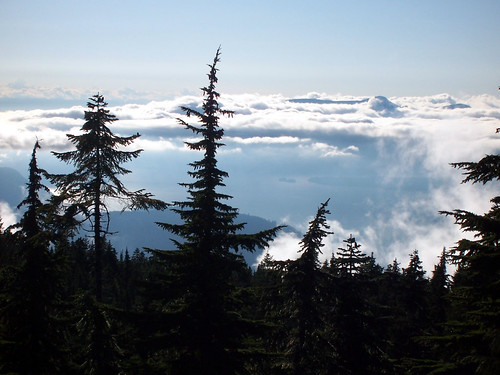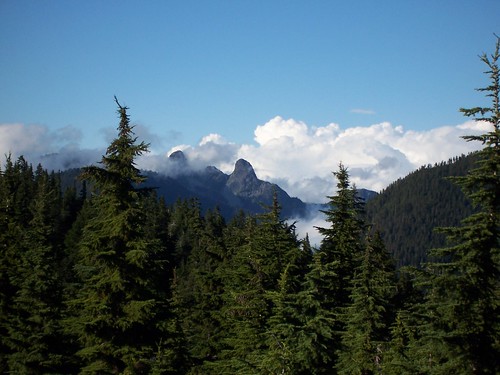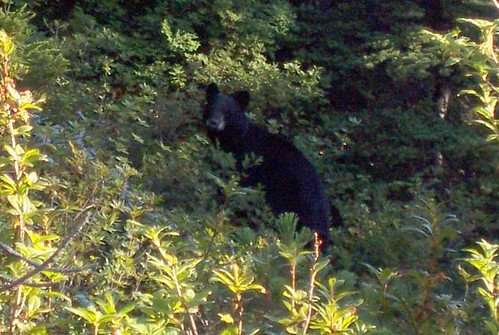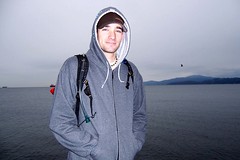Intellectual interlude, by Magalie
While I was in Hanoi, Vietnam I purchased a copy of Zen And The Art Of Motorcycle Maintenance, a book that has little to do about Zen or motorcycles. But it is a great book, a fantastic book that makes you think and reflect. A good change after some other books that I had been reading.
When I read Robert Pirsig's take on mountain climbing, I was really interested. Obviously I love hiking. But what he said about the purpose of climbing and the types of climbers was what really got me. It made so much sense.
I think why I liked his take on the purpose of climbing was that I had found myself with one bad hiking experience, and I was blaming the mountain instead of me for the experience. While I was in Japan I wanted to climb Mt Fuji. I wanted to climb it because it was "the thing to do" as well as I wanted to be able to say that I climbed it. I wanted it to be a notch on my belt. And so, I climbed it, at night, like the locals do. At first it was all fun and games but quite soon I was no longer having fun. I wanted to be at the end, at the top. That's all I thought about, all I wanted. That and for my misery to end. See, Mt Fuji is not an easy mountain to start with. It is a steep volcano and the footing and the altitude makes for a very challenging hike. I did not know that prior to starting the hike, and I wasn't ready to hike in the dark, where you cannot let your mind wonder on the little things around you or the beautiful scenery. This hike was all about the next step. Catching my breath. The next station. Making it to the top for the sunrise.
At the nth 8th station I had to face the reality of the situation and abandon my goal of getting to the top. I watched the sunrise but it was a blur: I was tired, hungry and suffering from altitude sickness. When the hike was over, 11 hours after the start, I was angry, disappointed and frustrated. This had been the worst hike ever. Only crazy people hike Fuji. This had been the worst idea of my life.
But on my trip I also encountered the best hike of my life. In New Zealand I did a section of the Tongariro crossing, another volcano. But this time I was doing the hike because I really, truly wanted to do it. I wanted to see it. Experience it. The hike took me 6.5 hours to accomplish, and that was with me taking my time, taking breaks and taking a whole lot of pictures. Never have I had so much energy. Never have I had been more stunned by the beauty of a landscape. I was just amazed the entire way. It was not about reaching the top. It was about seeing the now. Enjoying the impossibly stunning everything, from the volcanic rocks to the flowers to the lakes.
It was effortless.
When I read Robert Pirsig's take on mountain climbing, I was really interested. Obviously I love hiking. But what he said about the purpose of climbing and the types of climbers was what really got me. It made so much sense.
Mountains should be climbed with as little effort as possible and without desire. The reality of your own nature should determine the speed. If you become restless, speed up. If you become winded, slow down. You climb the mountain in an equilibrium between restlessness and exhaustion. Then, when you're no longer thinking ahead, each footstep isn't just a means to an end but a unique event in itself. This leaf has jagged edges. This rock looks loose. From this place the snow is less visible, even though closer. These are things you should notice anyway. To live only for some future goal is shallow. It's the sides of the mountain which sustain life, not the top. Here's where things grow. (p.183)
I think why I liked his take on the purpose of climbing was that I had found myself with one bad hiking experience, and I was blaming the mountain instead of me for the experience. While I was in Japan I wanted to climb Mt Fuji. I wanted to climb it because it was "the thing to do" as well as I wanted to be able to say that I climbed it. I wanted it to be a notch on my belt. And so, I climbed it, at night, like the locals do. At first it was all fun and games but quite soon I was no longer having fun. I wanted to be at the end, at the top. That's all I thought about, all I wanted. That and for my misery to end. See, Mt Fuji is not an easy mountain to start with. It is a steep volcano and the footing and the altitude makes for a very challenging hike. I did not know that prior to starting the hike, and I wasn't ready to hike in the dark, where you cannot let your mind wonder on the little things around you or the beautiful scenery. This hike was all about the next step. Catching my breath. The next station. Making it to the top for the sunrise.
Any effort that has self-glorification as its final endpoint is bound to end in disaster. Now we're paying the price. When you try to climb a mountain to prove how big you are, you almost never make it. And even if you do it's a big hollow victory. In order to sustain the victory you have to prove yourself again and again in some other way, and again and again and again, driven forever to fill a false image, hunted by the fear that the image is not true and someone will find out. That's never the way.
(...)
He never reached the mountain. After the third day he gave up, exhausted, and the pilgrimage went on without him. He said he had the physical strength but that physical strength wasn't enough. He had the intellectual motivation but that wasn't enough either. He didn't think he had been arrogant but thought that he was undertaking the pilgrimage to broaden his experience, to gain understanding for himself. He was trying to use the mountain for his own purposes and the pilgrimage too. He regarded himself as the fixed entity, not the pilgrimage or the mountain, and thus wasn't ready for it. He speculated that the other pilgrims, the ones who reached the mountain, probably sensed the holiness of the mountain so intensely that each footstep was an act of devotion, an act of submission to his holiness. The holiness of the mountain infused into their own spirits enabled them to endure far more than anything he, with his greater physical strength, could take.
To the untrained eye ego-climbing and selfless climbing may appear identical. Both kinds place one foot in front of the other. Both breathe in and out at the same rate. Both stop when tired. Both go forward when rested. But what a difference! The ego-climber is like an instrument that's out of adjustment. He puts his foot down an instant too soon or too late. He's likely to miss a beautiful passage of sunlight through the trees. He goes on when the sloppiness of his step shows he's tired. He rests at odd times. He looks up the trail trying to see what's ahead even though he knows what ahead because he just looked a second before. He goes too fast or too slow for the conditions and when he talks his talk is forever about somewhere else, something else. He's here but he's not here. He rejects the here, is unhappy with it, wants to be farther up the trail but when he gets there will be just as unhappy because then it will be "here". What he's looking for, what he wants, is all around him, but he doesn't want that because it is around him. Every step's an effort, both physically and spiritually, because he imagines his goal to be external and distant. (p. 198-190)
At the nth 8th station I had to face the reality of the situation and abandon my goal of getting to the top. I watched the sunrise but it was a blur: I was tired, hungry and suffering from altitude sickness. When the hike was over, 11 hours after the start, I was angry, disappointed and frustrated. This had been the worst hike ever. Only crazy people hike Fuji. This had been the worst idea of my life.
But on my trip I also encountered the best hike of my life. In New Zealand I did a section of the Tongariro crossing, another volcano. But this time I was doing the hike because I really, truly wanted to do it. I wanted to see it. Experience it. The hike took me 6.5 hours to accomplish, and that was with me taking my time, taking breaks and taking a whole lot of pictures. Never have I had so much energy. Never have I had been more stunned by the beauty of a landscape. I was just amazed the entire way. It was not about reaching the top. It was about seeing the now. Enjoying the impossibly stunning everything, from the volcanic rocks to the flowers to the lakes.
It was effortless.

